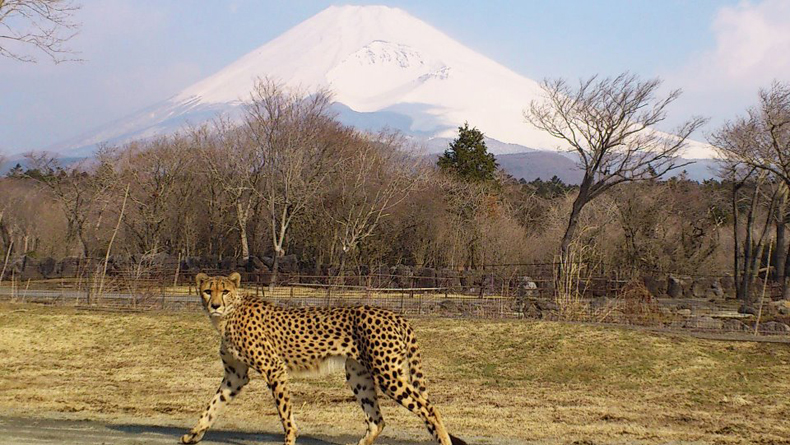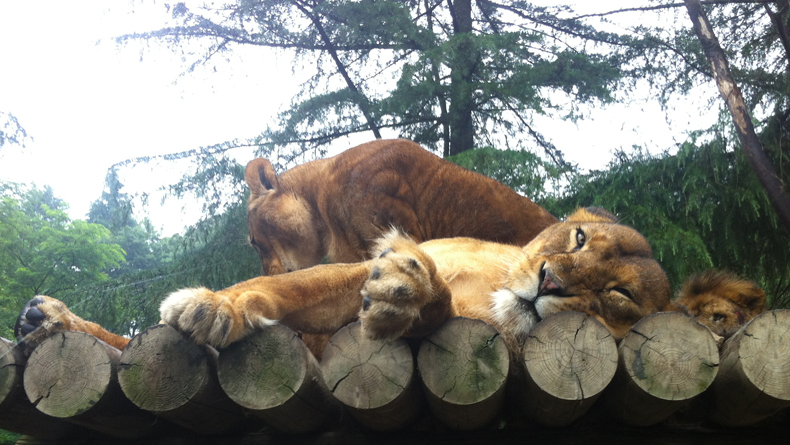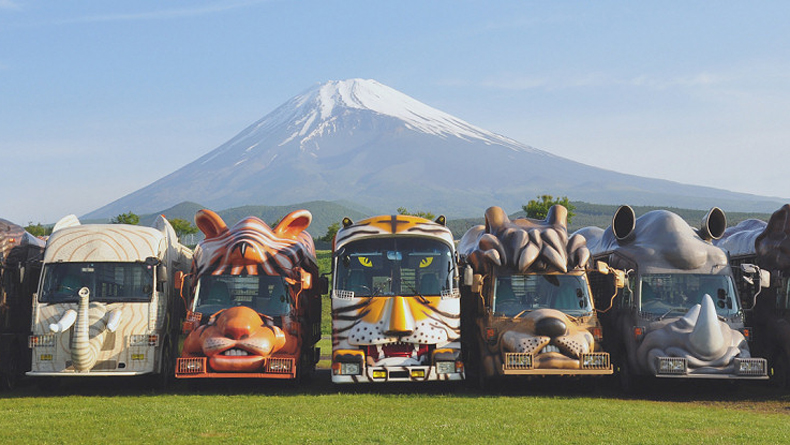Day Trip To Fuji Safari Park
Into The Wild
When most people think of safaris, they probably think of riding in a jeep or open back truck somewhere in the African desert, stylishly dressed in khaki shorts and a straw hat, with binos dangling from their necks in order to capture that elusive glimpse of some majestic predator. What they probably don't think of is seeing these same predators roaming the lowlands around the snow-capped peak of Mt. Fuji. And yet, that is exactly the setting in which my very first safari took place.
Fuji Safari Park, which opened in 1980, was the first safari-style attraction of its kind in Japan, and is by far the largest. It is located just seven kilometers from the base of Mt. Fuji. After running out of ways to keep the kids occupied in Tokyo over their summer holidays, early one Saturday morning my husband and I decided on a whim to take our seven-year-old daughter and three-year-old son to the park.
On arrival, we paid the entrance fee and then were asked if we wanted to fork over the extra cash to take a guided bus tour. We figured we had come this far that we might as well. On the buses—each of which is decorated to look like a different animal—passengers are given vegetables, pellets and meat to feed to the animals, which expectantly greet each bus for the tasty tidbits. Our kids loved the feeding part, squealing with joy each time one of the animals came close to their outstretched hands. I may not have ever been on a real safari, but I can pretty much guarantee this is one thing it wouldn’t have.
Seeing some of the kids’ favorite zoo animals, like the large brown bears and the lions, close up is fantastic, and their little faces lit up each time one got near. In each of the seven gated zones of the park there are large herds of animals such as zebras, camels, elk and buffaloes, and the more dangerous ones like the tigers, cheetahs and elephants have large enclosures where they can freely walk around.
Unlike in some zoos, none of the animals look stressed and most are fairly active—meaning you can actually see them.
The park is divided into two zones: the safari zone mentioned above and the free contact zone. The latter is made up of zoo-style enclosures for smaller mammals, as well as a small petting station for rabbits, which was also a big hit with the kids.
Nearer to the reception and restaurants there are many “houses” dedicated to a particular species. The dog house has many varieties of smaller breeds, all wandering around a large hall. Visitors can spend up to 30 minutes playing with the pooches, for an additional charge of ¥500. The same goes for the cat and rabbit houses—for a fee, patrons can enter and play with the animals. When we got there close to the afternoon, most of the animals were already getting a bit tired from the constant attention, and particularly the cats were retreating to the safety of the house rafters for some quiet time.
We then went to check out the food amenities, which turned out to be one of the few disappointing aspects of the excursion. A large canteen-type family restaurant serves a limited selection of basic Japanese dishes, such as katsu curry rice and some fried items. There are also a few stalls set up outside, selling things like hotdogs and shaved ice. If your children are picky eaters or if you just want a tastier and healthier meal than what is offered at the park, I would definitely pack a picnic basket for the trip. There are plenty of benches and outdoor seats available.
After we finished lunch, the kids wanted to go back into the safari section, so this time we drove through in our own car. This was actually quite fun too, as the lower seating of the car brings a different perspective and view compared with the iron-grated and elevated bus windows. The park has strict rules that car windows and doors must be closed and locked at all times, and it’s easy to see why—when a large male lion began to scratch the front fender of the car, it felt like a large earthquake was happening.
This sent the kids into an excited frenzy, but was short-lived as the rangers—ever present in their SUVs—came over to move the lion on.
It takes about 30 minutes to drive through each of the seven sections, and I would recommend visitors go both on the bus and in their own car if possible (although this requires an early morning start from Tokyo to get through everything).
From April through October, the park also has a night safari, for which visitors are given night-vision equipment to observe the animals and their nocturnal behavior. The big cats are particularly active at this time and often can be heard fighting among themselves, making for a thrilling car seat adventure.
The Deets
Getting there: By car, take the Tomei expressway out of Tokyo, but be warned: even early on a Saturday morning, traffic can be a disaster in central Tokyo, so try to avoid national holidays and long weekends. Once you get out of central Tokyo, the traffic usually eases up and it’s a straight run all the way to Susono exit, then about 10 kilometers on local roads.
By train, take the Tokaido shinkansen to Mishima station, then a local bus goes right to the park (36 minutes).
Admission: ¥2,700 for adults and ¥1,500 for kids. Add a couple thousand yen extra for the bus tour.
Address: 2255-27 Aza Fujiwara, Susono-shi, Shizuoka
Tel: 055-998-1311
Open: Daily, but hours vary throughout the year. See the website for more details.
View Larger Map














